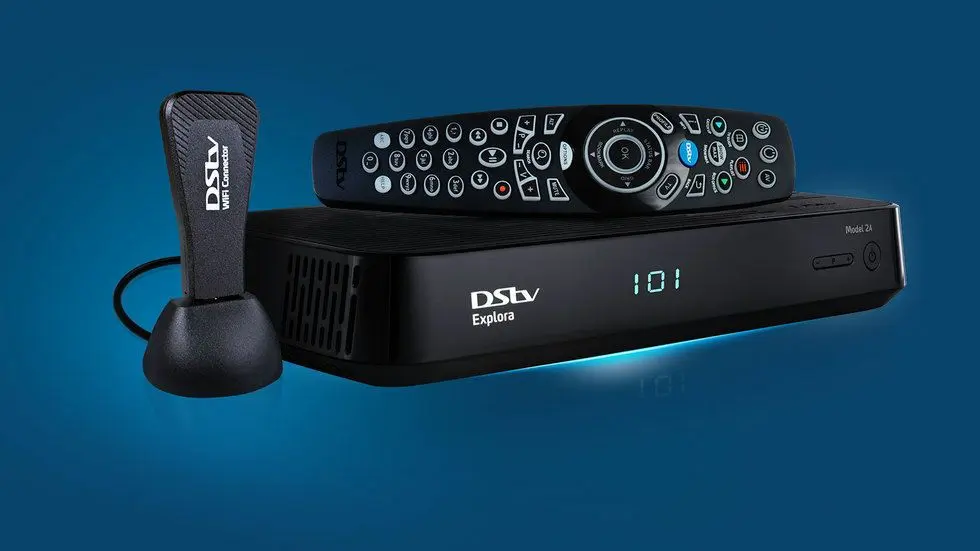Do you find yourself frequently frustrated when your DSTV signal suddenly goes out, and that crucial football match or must-see series disappears from your screen? I understand how annoying losing a signal can be when you want to relax and enjoy entertainment after a long day.
Don’t worry. I have some simple solutions that can connect your DSTV decoder and show a clear picture faster than you can say, “Up, NEPA!”
In this guide, I will walk you through some basic troubleshooting steps you can follow on how to fix no signal on DSTV decoder and get your DSTV working again in minutes.
Let’s begin!
How To Fix No Signal On DSTV Decoder
Do the following troubleshooting to isolate and fix the issue you’re having with your DSTV decoder.
1. Check the Cables
The first thing you should do when you experience a “No Signal” error on your DSTV decoder is to check the cables. Make sure that all the cables are properly connected to the decoder and the TV. Check for any loose connections or damaged cables. If you find any damaged cables, replace them immediately.
2. Check the DSTV Dish
With time and outdoor exposure, satellite dishes can become misaligned, stopping signals from being accurately transmitted to your decoder. Have an installer check proper alignment towards your satellite provider’s broadcast location in the sky and double-check cabling for any external damage or kinks.
3. Check the Dish Alignment
The dish alignment is another important factor affecting your DSTV decoder’s signal strength. If the dish is not correctly aligned, you may experience a “No Signal” error on your DSTV decoder. Check the dish alignment and adjust it if necessary.
Consider raising your dish higher up, clear of surrounding obstructions like trees and buildings that have grown over time, hindering line-of-sight. Check your subscription status by entering your smart card number online or via mobile to rule out an expired account accidentally causing a loss of reception.
4. Check the Signal Strength
A weak signal can also cause the “No Signal” error on your DSTV decoder. Check the signal strength on your decoder. Adjust the dish to get a stronger signal if the signal strength is weak.
To do this, navigate to the ‘Signal Test’ option under System Settings on your DSTV decoder’s main menu. The ideal signal strength range is between 50 – 100%. If your reception tests are lower than 50%, contact your satellite dish installer to investigate and resolve why the signal reaching your home could be better.
5. Check the LNB
The LNB (Low-Noise Block Down Converter) is an important component of your DSTV decoder. It receives the signal from the satellite dish and sends it to the decoder. If the LNB is faulty, you may experience a “No Signal” error on your DSTV decoder. Check the LNB for any damage or wear and tear. Contact your installer about replacing it if it is cracked or otherwise physically damaged. Also, check that cable connectors linking your LNB and decoder are securely fastened.
6. Check the Decoder Settings
Incorrect decoder settings can also cause the “No Signal” error on your DSTV decoder. Check the decoder settings and make sure that they are correct. You can also reset the decoder to its default settings.
Rebooting your DSTV decoder can clear any temporary glitches, causing no signal issues. Unplug your decoder’s mains cable for 60 seconds before reconnecting to reboot the system. Wait a few minutes for the decoder to reload all settings and check if this restores your signal lock.
7. Check the Weather
The weather can also affect the signal strength on your DSTV decoder. If there is heavy rain or a thunderstorm, you may experience a “No Signal” error on your DSTV decoder. Wait for the weather to clear up, then check the signal strength.
If the “No Signal” error doesn’t clear up after a heavy rain, be patient so the weather can clear up, and hopefully, the error will be cleared. You can’t do much when your decoder is affected by weather; you must wait for the decoder to clear up the error automatically.
Conclusion
In conclusion, the “No Signal” error on your DSTV decoder can be caused by various factors. However, following the steps outlined in this article, you can quickly fix the error and return to watching your favorite shows.
If you’ve tried everything and could not resolve the issue, have your installer look at the dish and reinstall it, or contact the DSTV customer support team for assistance.
Frequently Asked Questions
How Do I Connect My LNB Cable to My DSTV?
To connect your LNB cable to your DSTV decoder:
- Screw one end of the coaxial cable to the “Satellite In” port at the back of your decoder.
- Connect the other end to your satellite dish’s LNB.
- Ensure the connections are tight and secure.
How Do I Check My DSTV Connectivity Checker?
To check your DStv connectivity, you can do the following:
- Press the HELP button on your remote
- Select Tools
- Select Connectivity Checker
- Press OK
How Do I Know if My DSTV LNB Is Working?
Signs your DSTV LNB may be faulty include a “No Signal” display, low “Signal Strength” percentage on diagnostic Channel 198, or no lights/LED on the LNB itself. You can confirm if the cables and other components are OK before declaring the LNB damaged and needing replacement.
Can Faulty LNB Cause No Signal?
A faulty or damaged LNB is a common cause of getting no satellite signal and just a blank screen on your DSTV decoder. The LNB component at the dish focuses and conveys signal via cables to your decoder, so any disruption prevents reception.
How Do I Know If My Satellite Dish Is Faulty?
Indications your DSTV satellite dish is faulty include consistently low “Signal Strength,” frequent signal drop-outs, especially in the wind/rain, which shouldn’t affect the correctly aligned dish, damage like dents or rust, or if the dish itself has moved out of correct alignment towards the satellite.




